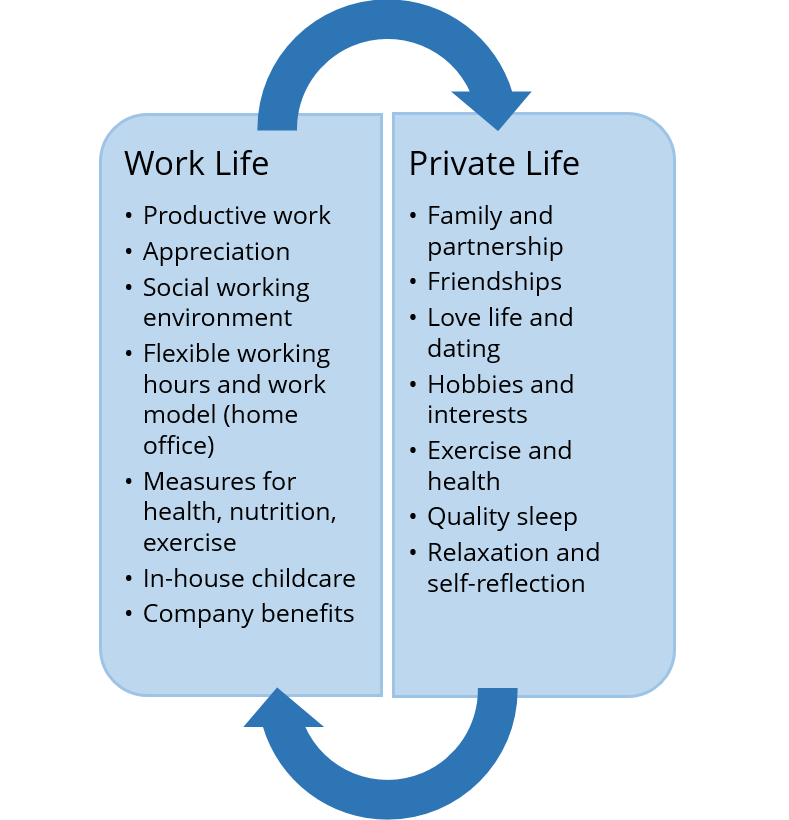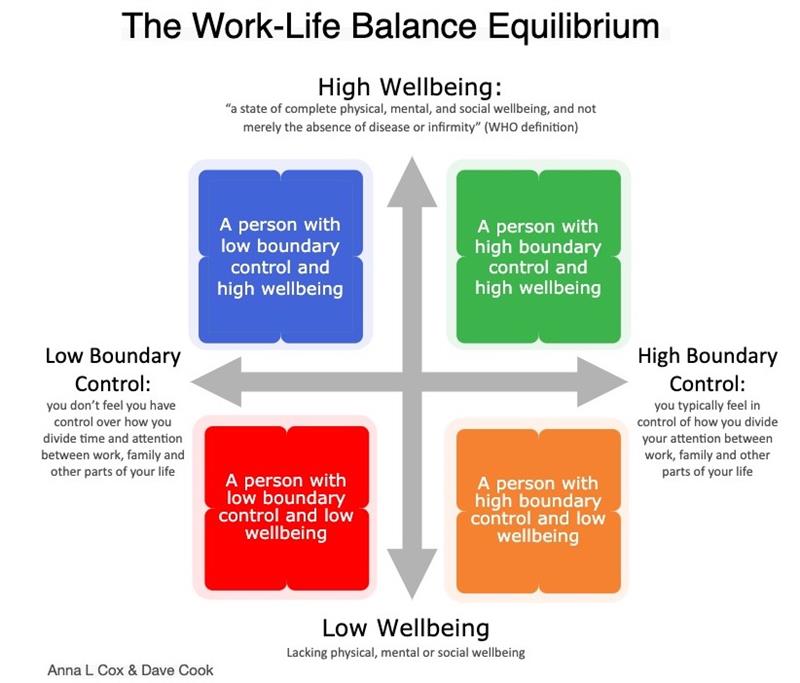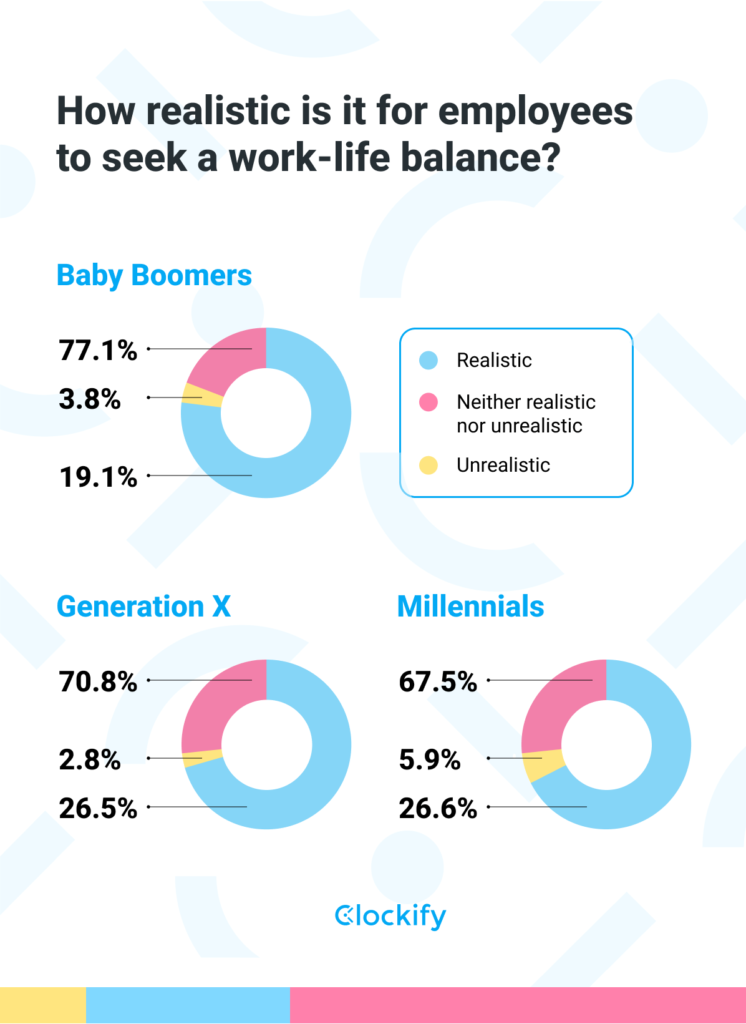In today’s fast-paced and demanding work culture, it’s crucial to find a company that values and promotes a healthy work-life balance. But how can you tell if a company is truly committed to this? Look out for signs such as flexible working hours, employee wellness programs, and a supportive company culture that encourages personal growth and self-care. Evaluating these factors will help you make an informed decision, ensuring a harmonious and fulfilling work experience.

Overview
What is work-life balance?
Work-life balance refers to the equilibrium between work and personal life, where individuals are able to effectively manage their professional responsibilities while also enjoying a fulfilling personal life. It is about finding the right blend between work and leisure, ensuring that time is allocated and prioritized for both professional and personal commitments. This balance is crucial for maintaining overall well-being, productivity, and satisfaction in all aspects of life.
Importance of work-life balance
Work-life balance plays a pivotal role in fostering overall happiness and satisfaction in individuals. It allows you to prioritize and allocate time for personal growth, family and social commitments, and self-care activities, in addition to your professional responsibilities. A healthy work-life balance enhances overall well-being, reduces stress and burnout, improves mental and physical health, and increases job satisfaction and productivity. It also promotes healthier relationships and a sense of fulfillment in all areas of life.
Factors to Consider
Company culture
Company culture has a significant impact on work-life balance. A supportive and inclusive culture encourages a healthy balance by promoting policies and practices that value personal time, flexibility, and work-life integration. A company with a positive culture will prioritize employee well-being, open communication, and transparency, creating an environment that allows individuals to thrive both personally and professionally.
Employee benefits
Comprehensive employee benefits can strongly influence work-life balance. Companies that offer benefits such as health and wellness programs, paid parental leave, and flexible spending accounts demonstrate a commitment to supporting employees’ well-being and personal lives. These benefits enable individuals to manage their physical and mental health, handle family obligations, and address financial needs, thus facilitating a better work-life balance.
Flexible working hours
The availability of flexible working hours is crucial for achieving work-life balance. Companies that provide options for remote work, part-time or job-sharing arrangements, and flexible scheduling allow employees to manage their time more effectively. Whether it’s fulfilling personal commitments or achieving a better work-life integration, flexible working hours empower individuals to create a schedule that best suits their needs, promoting a healthier balance.
Vacation and time off policies
Vacation and time off policies significantly impact work-life balance. A company that encourages and supports the use of vacation days and provides generous paid time off policies demonstrates a commitment to employees’ well-being. Additionally, offering sick leave, personal days, and leave for emergencies allows individuals to take care of their health or handle unexpected situations without compromising their work or personal life responsibilities.
Employee satisfaction and retention
Employee satisfaction and retention are key indicators of a healthy work-life balance. Companies that prioritize employee feedback and surveys, listen to their employees’ needs and concerns, and take appropriate actions to address them, are more likely to create an environment that values work-life balance. Lower turnover rates and higher employee satisfaction levels indicate that individuals feel supported, valued, and have a healthy integration of work and personal life within the organization.
Stress and burnout levels
High stress and burnout levels are clear indicators of an unhealthy work-life balance. Companies that promote a work environment where excessive workload, unrealistic expectations, and lack of support contribute to stress and burnout need to reassess their practices. Organizations that actively support mental health, provide stress management programs, and foster a culture of work-life balance, help mitigate stress and burnout, ultimately creating a healthier and happier workforce.

Company Culture
Communication and transparency
Effective communication and transparency lay the foundation for a healthy work-life balance. When employees have clear expectations, are kept informed of company changes and decisions, and feel comfortable expressing their needs, they can better manage their work and personal lives. Transparent communication allows individuals to plan and prioritize effectively, reducing stress and improving work-life integration.
Support for work-life balance
A company that actively supports work-life balance understands the significance of personal time and priorities. By implementing policies and practices that accommodate employees’ needs and obligations outside of work, such as flexible working hours, remote work options, and support for family responsibilities, organizations can create an environment that values work-life balance. This support fosters employee satisfaction, engagement, and overall well-being.
Collaborative and supportive environment
A collaborative and supportive work environment is essential for work-life balance. When employees feel supported by their colleagues and managers, they are more likely to seek help, brainstorm solutions, and find ways to manage their workload effectively. This collaborative environment promotes a sense of camaraderie and shared responsibility, which contributes to a healthier work-life balance by preventing excessive stress and burnout.
Employee Benefits
Health and wellness programs
Employee benefits that prioritize health and wellness play a crucial role in work-life balance. Companies that offer comprehensive health and wellness programs, such as on-site fitness facilities, wellness challenges, mental health support, and access to counseling services, help employees prioritize their physical and mental well-being. This support positively impacts work-life integration by enabling individuals to take care of their health and manage stress effectively.
Paid parental leave
Paid parental leave is a key benefit that contributes to work-life balance, especially for employees with caregiving responsibilities. Companies that provide generous paid parental leave policies empower parents to bond with their new child, adjust to their new family dynamic, and manage the demands of parenting without sacrificing their career or personal life. This benefit recognizes the importance of family and promotes a healthier balance for individuals who are starting or expanding their families.
Employee assistance programs
Employee assistance programs (EAPs) are a valuable resource for maintaining work-life balance. EAPs offer confidential counseling, support, and resources to employees and their immediate family members, helping them navigate personal challenges, stress, and mental health issues. By providing access to EAPs, companies demonstrate a commitment to supporting employees’ overall well-being, further enhancing work-life balance.
Flexible spending accounts
Flexible spending accounts (FSAs) allow employees to set aside pre-tax dollars to cover specific expenses, such as healthcare or dependent care. FSAs provide individuals with a financial tool to manage their personal obligations and reduce potential stress associated with financial responsibilities. This benefit contributes to work-life balance by alleviating financial burdens and allowing employees to focus on both work and personal commitments.

Flexible Working Hours
Availability of remote work
Remote work options are increasingly important for achieving work-life balance, particularly in today’s digital age. Companies that embrace remote work allow individuals to have greater control over their work environment, reduce commuting time, and manage personal commitments more efficiently. The availability of remote work fosters a healthier balance by offering flexibility and reducing stress associated with managing work and personal life in a traditional office setting.
Part-time or job-sharing options
Part-time or job-sharing arrangements provide individuals with opportunities to pursue a fulfilling career while maintaining a healthier work-life balance. Companies that offer these options allow employees to customize their work hours and commitments based on their personal needs and obligations. This flexibility enables individuals to manage their time effectively, ensuring that they can fulfill their responsibilities in both their professional and personal lives.
Flexible scheduling arrangements
Companies that offer flexible scheduling arrangements empower individuals to manage their work hours within a given timeframe. Flexibility in scheduling allows employees to adapt their workday to accommodate personal obligations, such as attending school events, medical appointments, or other important family commitments. Flexible scheduling arrangements promote work-life balance by creating an environment that recognizes the diverse needs and priorities of employees.
Vacation and Time Off Policies
Paid time off policies
Generous paid time off policies are essential for work-life balance. Companies that provide a sufficient number of vacation days or annual leave enable employees to take breaks, recharge, and rejuvenate. By encouraging individuals to use their vacation time, employers foster a culture that values personal well-being and acknowledges the importance of rest and relaxation in maintaining a healthy work-life balance.
Encouragement to use vacation days
An encouraging attitude towards using vacation days is indicative of a company’s commitment to work-life balance. When employers actively promote and advocate for employees to utilize their vacation time, it sends a clear message that personal well-being is valued over work-only productivity. Such encouragement creates an environment where individuals feel supported in prioritizing their personal lives, leading to greater work-life satisfaction.
Sick leave and personal days
Sick leave and personal days are crucial components of work-life balance. Companies that offer adequate sick leave and personal day allowances understand that employees may need time off for illness, personal appointments, or unexpected emergencies. By providing these resources, employers show consideration for employee well-being and reduce work-related stress associated with managing unforeseen personal circumstances.
Leave for emergencies
Having a policy in place that allows employees to take leave for emergencies demonstrates a commitment to work-life balance. Emergencies can arise at any time and require immediate attention. Companies that provide leave allowances for unexpected situations, such as family emergencies or natural disasters, acknowledge the importance of personal responsibilities and ensure individuals have the necessary support during challenging times.

Employee Satisfaction and Retention
Employee feedback and surveys
Obtaining regular feedback from employees is vital for assessing work-life balance within an organization. By conducting surveys or implementing feedback mechanisms, companies can gather insights into employees’ work experiences, satisfaction levels, and overall well-being. Employee feedback and surveys provide valuable information for identifying areas that need improvement and implementing strategies to enhance work-life balance.
Employee turnover rates
Employee turnover rates can serve as an indicator of work-life balance. High turnover rates may suggest that employees are dissatisfied with their work-life integration, experiencing excessive stress, or facing challenges in maintaining a healthy balance. Conversely, low turnover rates indicate that employees feel valued, supported, and are able to achieve a satisfactory work-life equilibrium within the organization.
Recognition and rewards programs
Recognition and rewards programs are essential for fostering a positive work environment and contributing to work-life balance. Companies that acknowledge employees’ efforts and achievements create a sense of validation and appreciation. Recognition can come in various forms, such as verbal praise, rewards, or opportunities for growth and development. These programs enhance employee satisfaction, motivate individuals to maintain a healthy work-life balance, and contribute to a positive overall workplace culture.
Stress and Burnout Levels
Workload and expectations
Managing workload and setting realistic expectations are crucial for preventing stress and burnout. Companies that provide manageable workloads, clearly defined roles and responsibilities, and reasonable deadlines, help employees maintain a healthier work-life balance. By aligning expectations with resources and providing support, organizations create an environment that values work-life integration and minimizes excessive stress.
Support for mental health
Mental health support is essential in maintaining work-life balance. Companies that prioritize employee mental health by offering counseling services, access to mental health resources, and training on stress management techniques create an environment that values employees’ overall well-being. Providing the necessary support and resources helps individuals effectively manage stress, prevent burnout, and achieve a more balanced life.
Workplace stress management programs
Workplace stress management programs are effective in addressing stress and promoting work-life balance. Companies that offer programs focused on stress reduction, mindfulness, meditation, or other stress management techniques facilitate employees’ ability to navigate work-related challenges while maintaining a healthy work-life equilibrium. By investing in such programs, companies actively support their employees’ mental and emotional well-being.

Additional Indicators
Social media presence
A company’s social media presence can provide insights into its work-life balance. Positive posts about work-life integration, employee well-being initiatives, and information about flexible work options indicate a commitment to work-life balance. Conversely, negative reviews or employee complaints about excessive work demands or lack of support may suggest poor work-life balance practices within the organization.
Reviews and ratings
Reviews and ratings on employer review websites or platforms can offer valuable insights into work-life balance within a company. Pay attention to employees’ comments and experiences regarding work hours, flexibility, support, and overall satisfaction with work-life integration. Positive reviews highlighting a healthy work-life balance and high ratings in this area indicate a positive organizational culture that prioritizes employee well-being.
Industry reputation
Consider the industry reputation of a company when assessing its work-life balance. Some industries, such as healthcare or manufacturing, may inherently have more challenging work schedules or demands. However, companies within these industries can still prioritize work-life balance by implementing supportive policies and practices that allow employees to manage their responsibilities effectively. Researching an industry’s general reputation and practices can provide useful context for evaluating work-life balance within a specific company.
Competitive compensation and benefits
Competitive compensation and benefits packages may also indicate a commitment to work-life balance. Companies that offer attractive salaries, comprehensive benefits, and additional perks demonstrate a desire to attract and retain top talent. A competitive compensation and benefits package contributes to work-life balance by providing financial stability, support for personal obligations, and a sense of overall satisfaction in one’s career.
Conclusion
Achieving a healthy work-life balance is essential for your overall well-being and happiness. Without balance, excessive work demands can take a toll on your mental and physical health, relationships, and personal fulfillment. By evaluating factors such as company culture, employee benefits, flexible working hours, vacation and time off policies, employee satisfaction and retention, stress and burnout levels, and additional indicators, you can determine whether a company prioritizes work-life balance. Remember, finding an organization that values work-life balance will set the stage for a fulfilling and prosperous personal and professional journey.



